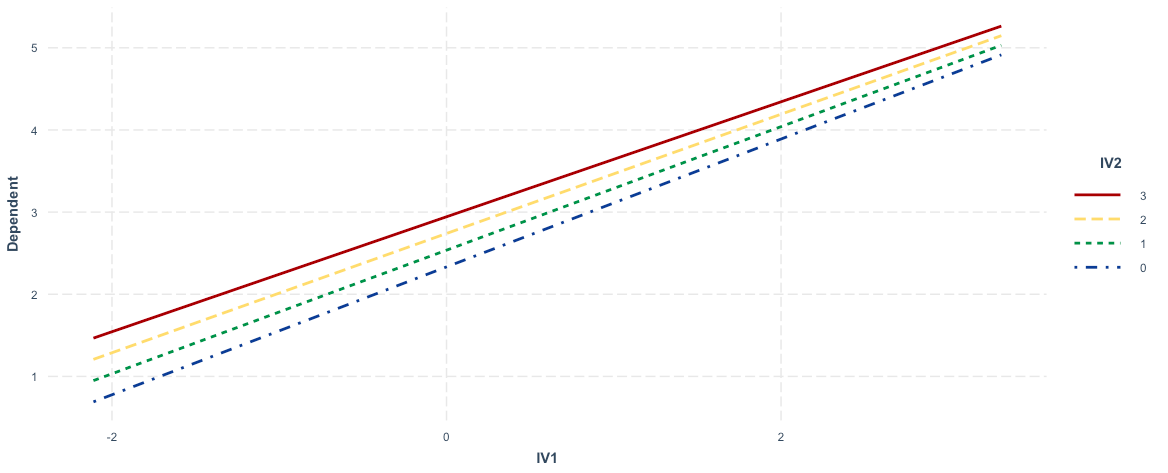I tried to test Cross-level interactions using lmer package.
age.gm, gender, race are controls and
IV.1.gm is the individual-level independent variable and IV.2.gm is the contextual-level independent variable.
The results look like this
Random effects:
Groups Name Variance Std.Dev.
state (Intercept) 0.03117 0.1765
Residual 0.78356 0.8852
Number of obs: 7176, groups: state, 51
Fixed effects:
Estimate Std. Error df t value Pr(>|t|)
(Intercept) 2.2894163 0.0706558 289.2703817 32.402 < 0.0000000000000002 ***
age.gm -0.0031718 0.0006319 7120.8153804 -5.019 0.00000053129273 ***
gender -0.0015704 0.0208730 7134.5146671 -0.075 0.9400
race 0.0640425 0.0254715 7145.4305624 2.514 0.0119 *
IV.1.gm 0.7781568 0.0105103 7120.8922774 74.038 < 0.0000000000000002 ***
IV.2.gm 0.2033964 0.0218219 42.4926330 9.321 0.00000000000784 ***
IV.1.gm:IV.2.gm -0.0261582 0.0057053 7118.3869626 -4.585 0.00000462014480 ***
---
Signif. codes: 0 ‘***’ 0.001 ‘**’ 0.01 ‘*’ 0.05 ‘.’ 0.1 ‘ ’ 1
Correlation of Fixed Effects:
(Intr) age.gm gender race IV1.gm. IV.2.gm.
age.gm 0.047
gender -0.753 -0.003
race -0.274 -0.170 0.013
IV.1.gm 0.003 -0.066 0.036 -0.099
IV.2.gm -0.433 0.005 -0.005 -0.027 -0.002
IV.1.gm:... 0.004 0.008 0.004 -0.034 -0.745 0.005
It's quite counter-intuitive, that the positive main effects of IV.1.gm and IV.2.gm are changed into negative effects on the dependent variable when I tested the interactions. Note that all variables are standardized, and there's no multicollinearity issue.
So I plotted the interaction effects, and it looks much confusing.
The visualization shows there are positive interaction effects. Then why do they show negative interaction terms in the regression table?

